
Structural Dynamics-US
Scope & Guideline
Advancing the frontiers of structural dynamics research.
Introduction
Aims and Scopes
- Ultrafast Spectroscopy Techniques:
Research utilizing ultrafast laser and x-ray techniques to probe the dynamics of molecular and material systems on femtosecond to picosecond timescales. - Structural Biology and Macromolecular Dynamics:
Studies focusing on the structural determination and dynamics of biological macromolecules, including proteins and nucleic acids, often employing time-resolved x-ray crystallography. - Nanostructure and Material Dynamics:
Investigations into the structural properties and dynamic behavior of nanoscale materials, including the use of advanced diffraction and imaging techniques. - Computational Modeling and Simulations:
Theoretical and computational approaches to understand and predict structural dynamics, including molecular dynamics simulations and quantum mechanical calculations. - Interdisciplinary Applications:
Integration of structural dynamics research with other fields, such as chemistry, physics, and materials science, reflecting the journal's broad scope.
Trending and Emerging
- Ultrafast Electron Diffraction:
A significant increase in research utilizing ultrafast electron diffraction techniques to capture real-time structural changes at the atomic level, showcasing advances in time-resolved imaging. - Machine Learning in Structural Dynamics:
Emerging applications of machine learning algorithms to analyze and interpret complex data from structural dynamics studies, enhancing data processing and predictive modeling capabilities. - Integration of X-ray Free-Electron Lasers (XFELs):
Growing interest in the application of XFELs for time-resolved studies, enabling unprecedented insights into transient structural states and dynamics of various materials. - Protein Dynamics and Functional Studies:
An increasing focus on the dynamic behavior of proteins in action, emphasizing the importance of understanding conformational changes in biological processes. - Nanoscale Imaging and Characterization:
Rising trends in research related to nanoscale imaging techniques, highlighting the significance of structural dynamics at the nanoscale and its implications for materials science.
Declining or Waning
- Traditional Crystallography Techniques:
There is a noticeable reduction in the publication of studies focusing solely on conventional crystallography methods, as the field increasingly embraces more dynamic and time-resolved techniques. - Static Structural Analysis of Proteins:
Research centered on static structural determination without considering dynamic aspects has decreased, highlighting a shift towards understanding protein dynamics in functional contexts. - Low-Resolution Imaging Techniques:
Fewer studies are being published utilizing low-resolution imaging methods, with a growing preference for high-resolution, time-resolved approaches that provide deeper insights into structural dynamics. - Single-Particle Imaging without Ultrafast Techniques:
The decline in interest in single-particle imaging that does not incorporate ultrafast dynamics reflects a broader trend towards methodologies that capture time-dependent processes. - Classical Theoretical Approaches:
The journal has seen fewer publications focusing on classical theoretical models without integration into ultrafast dynamics, as researchers move towards more sophisticated and computationally intensive methods.
Similar Journals
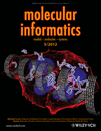
Molecular Informatics
Advancing the Frontiers of Molecular ScienceMolecular Informatics is a prestigious journal published by WILEY-V C H VERLAG GMBH, dedicated to advancing the fields of computational analysis and molecular modeling. As a key resource in the realms of Computer Science Applications, Drug Discovery, Molecular Medicine, Organic Chemistry, and Structural Biology, this journal is recognized for its significant contributions and is ranked in the Q2 and Q3 categories across multiple disciplines, positioning it among the leading journals for researchers and academics. With an impressive track record since its inception in 2010 and converging its contributions until 2024, Molecular Informatics aims to bridge the gap between computational techniques and biological applications, promoting interdisciplinary collaboration and innovation. Accessible to a global audience, the journal reflects a commitment to advancing science through open access options, making cutting-edge research available to students, professionals, and decision-makers alike. This journal serves as an indispensable platform for disseminating high-quality research and fostering the development of new theoretical and practical frameworks in molecular informatics.

Crystals
Catalyzing Discoveries in Chemical Engineering and BeyondCrystals is a premier open-access journal, published by MDPI since 2011, that focuses on the multidisciplinary fields of chemical engineering, condensed matter physics, inorganic chemistry, and materials science. With its E-ISSN 2073-4352, the journal is headquartered in Switzerland, and actively contributes to the global scientific community by facilitating the dissemination of high-quality research. Ranking in the Q2 quartile across multiple categories, including Chemical Engineering (miscellaneous) and Materials Science (miscellaneous) for 2023, Crystals provides a platform for innovative studies that span from fundamental research to practical applications. The journal's commitment to open access ensures that groundbreaking findings are readily available to researchers, professionals, and students alike, fostering an environment of collaboration and knowledge sharing that is essential in advancing the scientific understanding of crystalline materials.

Computational and Theoretical Chemistry
Innovative Solutions for Complex Chemical ChallengesComputational and Theoretical Chemistry, published by ELSEVIER, stands at the forefront of interdisciplinary research in the realms of computational chemistry, theoretical physics, and biochemistry. With its ISSN 2210-271X and E-ISSN 1872-7999, the journal has established a significant presence in the academic community since its inception. Covering innovative computational methodologies and theoretical advancements, it addresses critical issues in condensed matter physics and molecular biochemistry, providing a rich resource for scholars and industry professionals alike. The journal enjoys a respectable impact factor and ranks notably in several Scopus categories, making it a vital platform for disseminating high-quality research. It adopts an open-access model, facilitating wider readership and engagement, which is essential for fostering collaborative innovations in the scientific landscape. As it continues to evolve from 2011 to 2024, Computational and Theoretical Chemistry is committed to advancing knowledge and promoting insightful discussions within the scientific community.

JOURNAL OF STRUCTURAL CHEMISTRY
Unveiling the Complexities of Molecular StructuresThe JOURNAL OF STRUCTURAL CHEMISTRY, published by PLEIADES PUBLISHING INC, is a premier resource in the fields of Inorganic Chemistry, Materials Chemistry, and Physical and Theoretical Chemistry. Established in 1960, this journal has been providing a platform for groundbreaking research, facilitating the advancement of knowledge and innovation up to the year 2024. With an ISSN of 0022-4766 and an E-ISSN of 1573-8779, this journal strives to maintain high academic standards, as evidenced by its quartile rankings in 2023, where it ranks Q4 across various chemistry categories. While it currently does not offer open access, the journal's insightful articles are crucial for professionals and students seeking to enhance their understanding and expertise in structural chemistry. Subscribers can expect a comprehensive collection of peer-reviewed research, empirical findings, and theoretical discussions that contribute significantly to the scientific community. With its strong historical foundation and ongoing commitment to quality, the JOURNAL OF STRUCTURAL CHEMISTRY continues to be an essential resource for those passionate about the complexities of structural chemistry.

JOURNAL OF SYNCHROTRON RADIATION
Driving Discoveries in High Energy PhysicsJOURNAL OF SYNCHROTRON RADIATION, an esteemed publication by the International Union of Crystallography, is a leading journal in the fields of Instrumentation, Nuclear and High Energy Physics, and Radiation. With an impressive impact factor and categorized as a Q1 journal across multiple disciplines in 2023, it demonstrates a commitment to advancing knowledge and applications in synchrotron radiation science. The journal has embraced an Open Access model since 2022, providing unrestricted access to cutting-edge research for a global audience. Published bi-monthly, JOURNAL OF SYNCHROTRON RADIATION serves as a vital platform for researchers, professionals, and students seeking to engage with the latest findings, methodologies, and innovations in synchrotron techniques and technologies. With its rich history from 1996 to 2024, it is recognized as a key resource for those aiming to push the boundaries of material science, structural biology, and beyond.
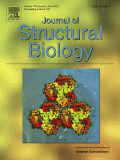
JOURNAL OF STRUCTURAL BIOLOGY
Exploring the Complexities of Life at the Molecular LevelJOURNAL OF STRUCTURAL BIOLOGY, published by Academic Press Inc. Elsevier Science, is a prestigious peer-reviewed journal dedicated to advancing the field of structural biology. With an impressive Impact Factor and recognized as a Q1 journal in its category for 2023, it holds a significant position in the academic community, ranked 20th out of 49 in the Scopus Biochemistry, Genetics and Molecular Biology - Structural Biology category. The journal publishes groundbreaking research that contributes to our understanding of biological macromolecules and their complexes, span from 1990 and continuing through 2024. Researchers and professionals alike rely on this journal for high-quality articles that cover a wide array of techniques including X-ray crystallography, NMR spectroscopy, and cryo-electron microscopy. Although it does not operate under an Open Access model, the journal remains a vital resource for those in academia and industry searching for the latest findings and methodologies in structural biology.
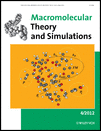
MACROMOLECULAR THEORY AND SIMULATIONS
Fostering Global Collaboration in Macromolecular ScienceMACROMOLECULAR THEORY AND SIMULATIONS, published by WILEY-V C H VERLAG GMBH in Germany, serves as a crucial platform for researchers and professionals in the fields of condensed matter physics, inorganic chemistry, materials chemistry, organic chemistry, and polymer science. Since its inception in 1992, the journal has provided a valuable resource for the dissemination of innovative theoretical and simulation-based research pertaining to macromolecules. With a current ranking in the Q3 quartile across multiple categories – including a rank of #98 in Polymers and Plastics and #50 in Inorganic Chemistry as of 2023 – it offers a unique opportunity for authors to engage with a global audience. Although it does not provide open access, the journal remains dedicated to advancing knowledge and fostering scholarly communication within its diverse scientific community, thus significantly contributing to developments in material science and polymer research. As it progresses into its convergence year of 2024, MACROMOLECULAR THEORY AND SIMULATIONS continues to inspire ground-breaking studies and elevate discourse, making it an essential resource for students and established researchers alike.
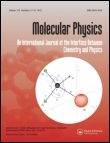
MOLECULAR PHYSICS
Innovating insights into molecular interactions.MOLECULAR PHYSICS, published by Taylor & Francis Ltd, is a distinguished international journal that has been advancing the fields of biophysics, condensed matter physics, molecular biology, and physical and theoretical chemistry since its inception in 1958. With an ISSN of 0026-8976 and an E-ISSN of 1362-3028, the journal provides a rich platform for the dissemination of high-quality research, evidenced by its Q3 ranking in several domains including both biophysics and condensed matter physics as of 2023. Although the journal operates on a traditional subscription model rather than an Open Access basis, its rigorous selection process ensures the publication of relevant and impactful articles. The journal's continued convergence of research until 2024 underlines its ongoing significance and adaptability in an ever-evolving scientific landscape. For researchers, professionals, and students alike, MOLECULAR PHYSICS serves as an essential resource for keeping abreast of the latest developments, fostering collaboration, and inspiring future advancements in molecular theory and applications.
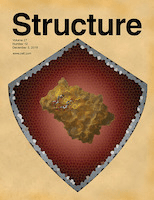
STRUCTURE
Fostering groundbreaking insights into molecular mechanisms.STRUCTURE is a premier academic journal published by CELL PRESS, dedicated to advancing the field of structural biology and molecular biology since its inception in 1993. With an impressive reputation, it is recognized as a Q1 journal in both Molecular Biology and Structural Biology categories, reflecting its high impact within the academic community. The journal holds a significant position in Scopus rankings, placing 10th among 49 in Structural Biology and 100th among 410 in Molecular Biology, marking it as a key resource with a strong influence on ongoing research. Researchers and professionals alike will find STRUCTURE an invaluable platform for disseminating cutting-edge findings related to protein structure, dynamics, and interactions, fostering insights that can lead to groundbreaking applications in medicine and biotechnology. Although the journal follows a traditional subscription model, it continues to attract a diverse array of submissions, ensuring a vibrant exchange of knowledge in the ever-evolving landscape of structural and molecular biology. Access to its content can enhance the understanding of intricate biological mechanisms, making it essential reading for experts, students, and anyone passionate about the molecular underpinnings of life.

NATURE STRUCTURAL & MOLECULAR BIOLOGY
Fostering Excellence in Structural and Molecular ResearchNATURE STRUCTURAL & MOLECULAR BIOLOGY is a leading journal published by NATURE PORTFOLIO, dedicated to advancing the field of molecular and structural biology since its inception in 1998. With an impressive impact factor that places it in the Q1 quartile across both the Molecular Biology and Structural Biology categories, this journal is pivotal for researchers and professionals seeking to publish innovative and high-impact results. Its Scopus ranking further highlights its elite status, with a remarkable 98th percentile for Structural Biology and 95th for Molecular Biology. While the journal does not currently offer open access, it continues to foster a rich discourse among scientists by providing a platform for the dissemination of groundbreaking research. Located in the United Kingdom and operated from Berlin, the journal's commitment to excellence positions it as an indispensable resource for students, researchers, and practitioners in the realms of biochemistry, genetics, and molecular biology.